More History of Tribeca Buildings
The History of Tribeca Buildings database—compiled from Tom Miller’s posts at Daytonian in Manhattan—has six more entries on the properties below. (Click the address to read the full text.) If you enjoy these, and you will, then you should definitely check out his website, which also has write-ups about buildings all over the island. And don’t miss his book, Seeking New York: The Stories Behind the Historic Architecture of Manhattan—One Building at a Time.
·························
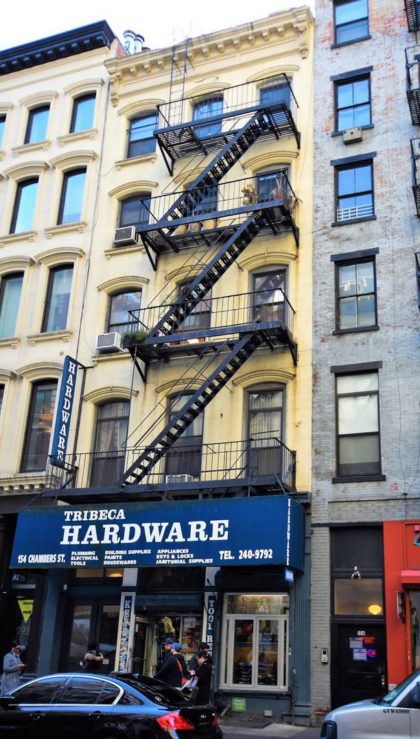 154 CHAMBERS
154 CHAMBERS
The J. M. Sherwood Co. leased the upper floors in 1914. Dealers and manufacturers in home goods and appliances, it offered the latest in domestic ranges to American housewives. In 1916, it patented what, would become a household must-have. On October 8 the New-York Tribune reported on the invention: “Dishes may not only be rinsed, but dried, in the Sherwood Dish Drainer. This is quite according to the most approved methods of dish drying, for the dish towel is no longer an important member of society. A special rack is provided for the plates, with a basket for the silver, and there is still space for the rest of the dishes.” The wire rack and galvanized pan retailed for 75 cents. It was hailed throughout the country and marketed in Europe. With only minor changes to J. M. Sherwood’s design, the dish drainer is still sold today.
·························
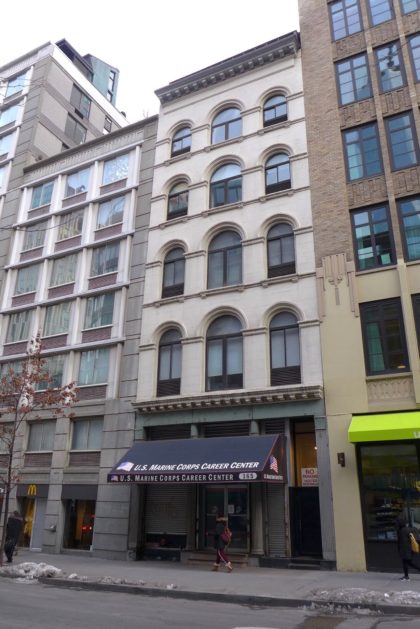 165 CHAMBERS
165 CHAMBERS
The boarding house at No. 165 Chambers Street catered to financially-comfortable tenants. An advertisement in The New York Herald on November 9, 1854,touted, “Parties wishing a pleasant private house down town, can obtain such, with desirable rooms, suitable for families and single gentlemen, on moderate terms, by early application.” Transient boarders were charged $1.25 per day, just over $35 in 2017 dollars. “Day boarders” paid $3 a week. The advertisement noted one amenity we would take for granted today: “Use of bath.”
·························
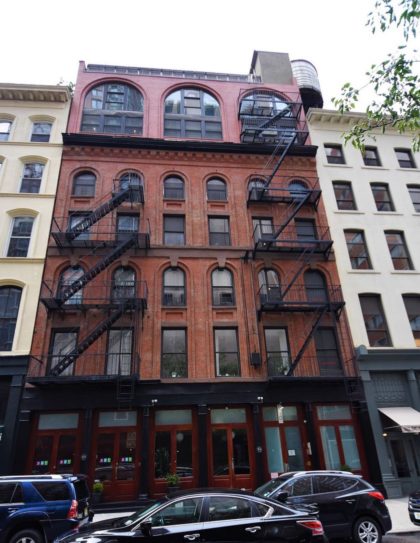 108-110 DUANE
108-110 DUANE
The upper floors were converted to its “looking-glass factory” where the complex process included cutting glass sheets, applying silver to glass, and framing. The third floor was the silvering department. Among the equipment was a drying drum, about three feet high and heated by a gas jet inside. Its purpose was to dry the papers and linens used in the silvering process. These items were simply placed over the outside of the hot drum. On Wednesday night, April 26, 1882, the employees went home for the night. Whoever extinguished the flame inside the drying drum failed to completely turn off the gas jet. Overnight, the drum filled with gas….
·························
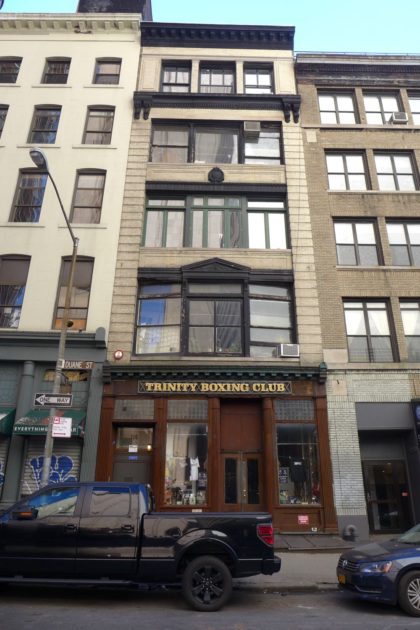 116 DUANE
116 DUANE
In 1876, there were three tenants, Meyer and Frank Neubrik’s clothing firm, M. Neubrik & Brother; Isidor Silverman, who dealt in “window shades and paper hangings;” and importer Henry C. Ely. One of those firms was hiring in December, 1878. An ad in The New York Herald sought a “Boy—Must have business experience; bright, honest, industrious; salary first year $100.” The wages would equal about $50 a week today.
·························
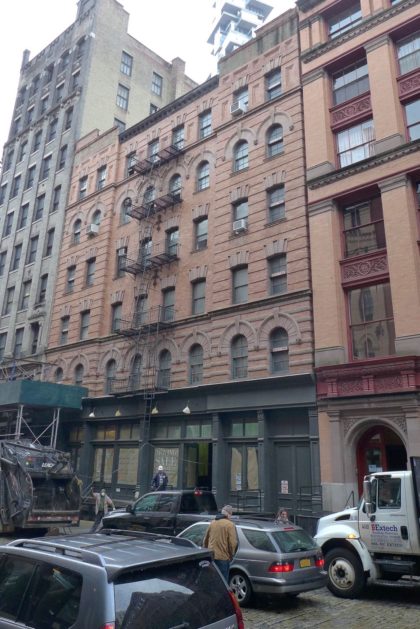 143-147 FRANKLIN
143-147 FRANKLIN
Leo Popper & Sons glass company had moved into No. 143-147 Franklin Street by 1911. That year it employed four men, two women and two children between 14 and 16 years old who made “glass buttons and beads.” Other employees manufactured plate glass mirrors, mirror-backed signs, and a variety of other glass products. Founded by Leo Popper, an Austrian immigrant, in 1879, by 1894 the firm was internationally-known for its art glass buttons. According to New York, 1894: Illustrated, “They import immense quantities of glass from Germany, France, Belgium, England, Austria and other foreign countries, carrying one of the largest and finest assorted stocks of French plate glass, window, car and coach glass, enameled, colored, ground and cathedral glass to be found in the city.” On July 29, 1916, German agents set fire to a complex of warehouses and ships in the New York Harbor that held munitions, explosives and fuel intended for the Allies. The resulting blast, known as the Black Tom Explosion, caused damage for several city blocks, sent debris raining down in Manhattan and New Jersey and damaged the Statue of Liberty. The glass to repair the Statue’s torch was supplied by Leo Popper & Sons.
·························
109 W. BROADWAY (112 READE)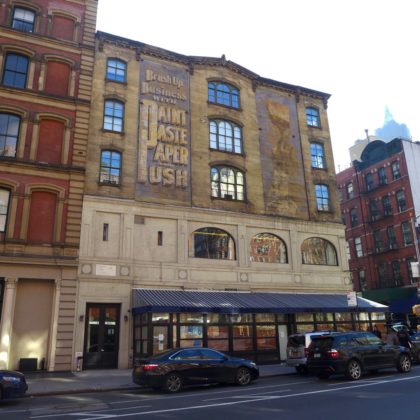
No. 112 Reade Street was completed in 1860; an Italianate style structure clad in sandstone with a cast iron storefront. The commercial tenants upstairs took the address of the side entrance, No. 113 West Broadway; while the retail space kept the Reade Street address. While the Reade Street facade above the storefront was handsome, with segmentally arched openings that sat on stone lintels supported by delicate brackets and topped with faceted keystones; it was the West Broadway elevation that stole the show. The central bay boasted a broad, tripartite window at ground floor. Rising directly above, the openings at each story framed grouped exceptionally striking sets of three arched windows. The stone, bracketed cornice rose to a slight pediment upon which a spread eagle—most likely cast iron—perched.
·························


















The last photo was a revelation to me. Every one of the many times I have looked up at that building, I see the “Paint Paste Paper and Push” signs, and I’ve never really noticed how beautiful those windows are.
I always assumed the painted walls go 112 Reade were advertising from a former era. But then I heard that they were put there more recently for a movie location shot. This perhaps makes sense since neither painted sign has the name of a manufacturer or company. Does anyone know the history of them?